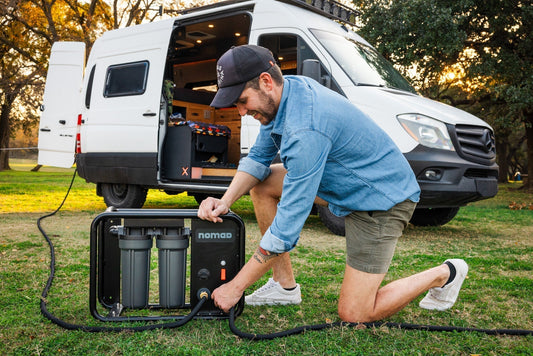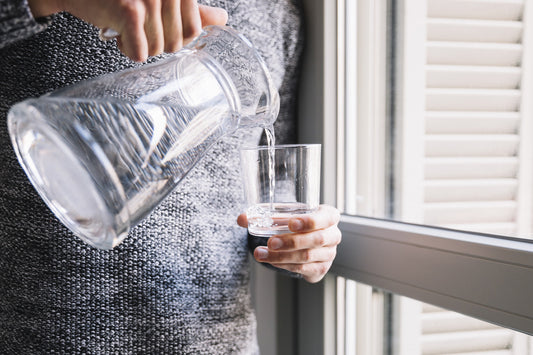Picture this: You're filling your morning coffee, and instead of that familiar chlorine taste, you're greeted with crisp, clean water that tastes like it came from a mountain spring. That's the magic of installing your own do it yourself water filter system – and yes, you can absolutely do this yourself in just one weekend.
As someone who's guided thousands of homeowners through this journey, I can tell you that the satisfaction of turning on your tap and getting restaurant-quality water is unmatched. Plus, you'll save thousands compared to buying bottled water year after year.
Why Your Kitchen Deserves a Filter Water House System
Let's talk real numbers for a moment. The average American family spends over $1,200 annually on bottled water. Meanwhile, a quality filter water house system installed under your sink costs less than half that and lasts for years. But this isn't just about money – it's about taking control of what goes into your body.
Your tap water travels through miles of aging pipes, picking up chlorine, sediment, and sometimes worse along the way. When you install a do it yourself water filter system, you're creating a barrier between your family and those contaminants. You're saying "no" to plastic waste and "yes" to pure, accessible water whenever you need it.
The health benefits are immediate and lasting. Clean water aids digestion, supports your immune system, and helps flush toxins from your body. Your coffee tastes better, your cooking improves, and you'll actually want to drink more water – which is exactly what your body needs.
Choosing Your Perfect DIY Water Filter System
Here's where many people get overwhelmed – there are so many options! But don't worry, I'll break it down into simple categories that match your specific needs.
Carbon Block Systems: The Popular Choice
Carbon block filters are like the Swiss Army knife of water filtration. They excel at removing chlorine, improving taste, and eliminating odors. If your main concern is making your water taste great and removing basic contaminants, this is your sweet spot.
These systems work through a process called adsorption – imagine millions of tiny pores grabbing onto contaminants as water flows through. They're affordable, easy to maintain, and perfect for most households.
Reverse Osmosis: The Premium Option
Think of reverse osmosis as the ultimate water purifier. It removes up to 99% of dissolved solids, including heavy metals, fluoride, and even microscopic bacteria. The water comes out so pure, it's essentially distilled.
This is the choice for families dealing with well water, high mineral content, or anyone who wants the absolute cleanest water possible. Yes, it's more complex to install, but the results are worth every minute.
Multi-Stage Filtration: Best of Both Worlds
Many modern systems combine multiple filtration methods. You might have a sediment filter first, then carbon, then a final polishing stage. This approach tackles different contaminants at each level, giving you comprehensive protection.

Image by pressfoto
Essential Tools and Materials for Success
Before we dive into installation, let's gather everything you'll need. There's nothing worse than getting halfway through a project and realizing you're missing a crucial tool.
Your Tool Arsenal:
- Adjustable wrench (this will be your best friend)
- Drill with various bits
- Screwdriver set
- Tape measure
- Safety glasses (protect those eyes!)
- Bucket for catching water
- Teflon tape for connections
Materials Included in Quality Kits: Most reputable do it yourself water filter system kits include everything: the filter housing, cartridges, tubing, faucet, and all necessary fittings. Always verify this before purchasing – incomplete kits are a common frustration.
Step-by-Step Installation: Your Weekend Project
Saturday Morning: Preparation and Planning
Start by clearing out your under-sink cabinet completely. This isn't just about making room – it's about assessing your space and planning the optimal layout. Take photos of your current plumbing setup; you'll thank yourself later if you need to reference the original configuration.
Turn off the cold water supply valve – usually located under the sink. This prevents any surprises when you start working with the water lines.
Installing Your New Faucet
If your system includes a dedicated faucet, this is where you'll start. Most kitchen sinks have a pre-drilled hole for a soap dispenser or sprayer – perfect for your new filtered water faucet.
Remove the soap dispenser (if present) and clean the area thoroughly. Thread your new faucet through the hole from above, then secure it from underneath with the provided hardware. Make sure it's snug but don't overtighten – you could crack the sink.
Connecting to Your Water Supply
This is where the magic happens. You'll install a T-adapter (also called a saddle valve) onto your cold water line. This clever device allows you to tap into your existing water supply without major plumbing modifications.
Position the T-adapter on a straight section of your cold water pipe. The included instructions will show you exactly how to secure it. Once it's in place, you can connect the tubing that will carry water to your filter.
Mounting Your Filter System
Choose a location that's easily accessible for future filter changes but won't interfere with your daily kitchen activities. The side of your cabinet is usually perfect – it keeps the system out of the way while remaining reachable.
Use the provided mounting bracket to secure your filter housing to the cabinet wall. Make sure it's level and firmly attached. A loose filter system can vibrate and potentially leak over time.
Making the Final Connections
Connect the incoming water line to your filter's inlet, and run another tube from the filter's outlet to your new faucet. This is where attention to detail pays off – each connection should be hand-tight plus a quarter turn with your wrench.
Testing Your New System
Turn your water supply back on and check every connection for leaks. Run water through your new filter water house system for about 10 minutes to flush out any carbon fines or manufacturing residues.

Maintenance That Keeps Your System Running Perfectly
The beauty of a well-installed do it yourself water filter system is that maintenance is minimal but crucial. Mark your calendar for filter changes – typically every 6-12 months depending on your water usage and quality.
When you notice a decrease in water pressure or a change in taste, it's time for a new filter. The process is usually as simple as unscrewing the old cartridge and screwing in the new one.
Keep an eye on your connections during routine kitchen cleaning. A quick visual check can catch small leaks before they become big problems.
Troubleshooting Common Hiccups
Reduced Water Flow: Nine times out of ten, this means your filter cartridge is doing its job – it's just time for a replacement. Heavy sediment or high usage can clog filters faster than expected.
Strange Taste or Odor: After installing a new filter, always flush the system for several minutes. New carbon filters can release harmless but noticeable carbon fines initially.
Leaking Connections: Don't panic! Turn off the water supply and check each connection. Sometimes a simple re-tightening solves the issue. If a fitting appears damaged, most hardware stores carry replacements.
The Life-Changing Benefits You'll Experience
Once your system is running, you'll wonder how you ever lived without it. Your morning coffee will taste noticeably better. Cooking with pure water enhances flavors you never knew were being masked by chlorine and other chemicals.
From a health perspective, you're removing potential contaminants while retaining beneficial minerals (depending on your filter type). Your family will likely drink more water naturally – it simply tastes better.
Financially, you'll see savings immediately. No more buying cases of bottled water or expensive filter pitchers. Your filter water house system pays for itself within months and keeps saving you money for years.

Image by freepik
Your Next Steps to Pure Water
Installing a do it yourself water filter system isn't just a weekend project – it's an investment in your family's health and your home's value. You now have all the knowledge needed to transform your kitchen into a source of pure, delicious water.
Remember, every expert installer started as a beginner. Take your time, follow the instructions, and don't hesitate to double-check your connections. Your future self will thank you every time you turn on that tap and taste the difference.





